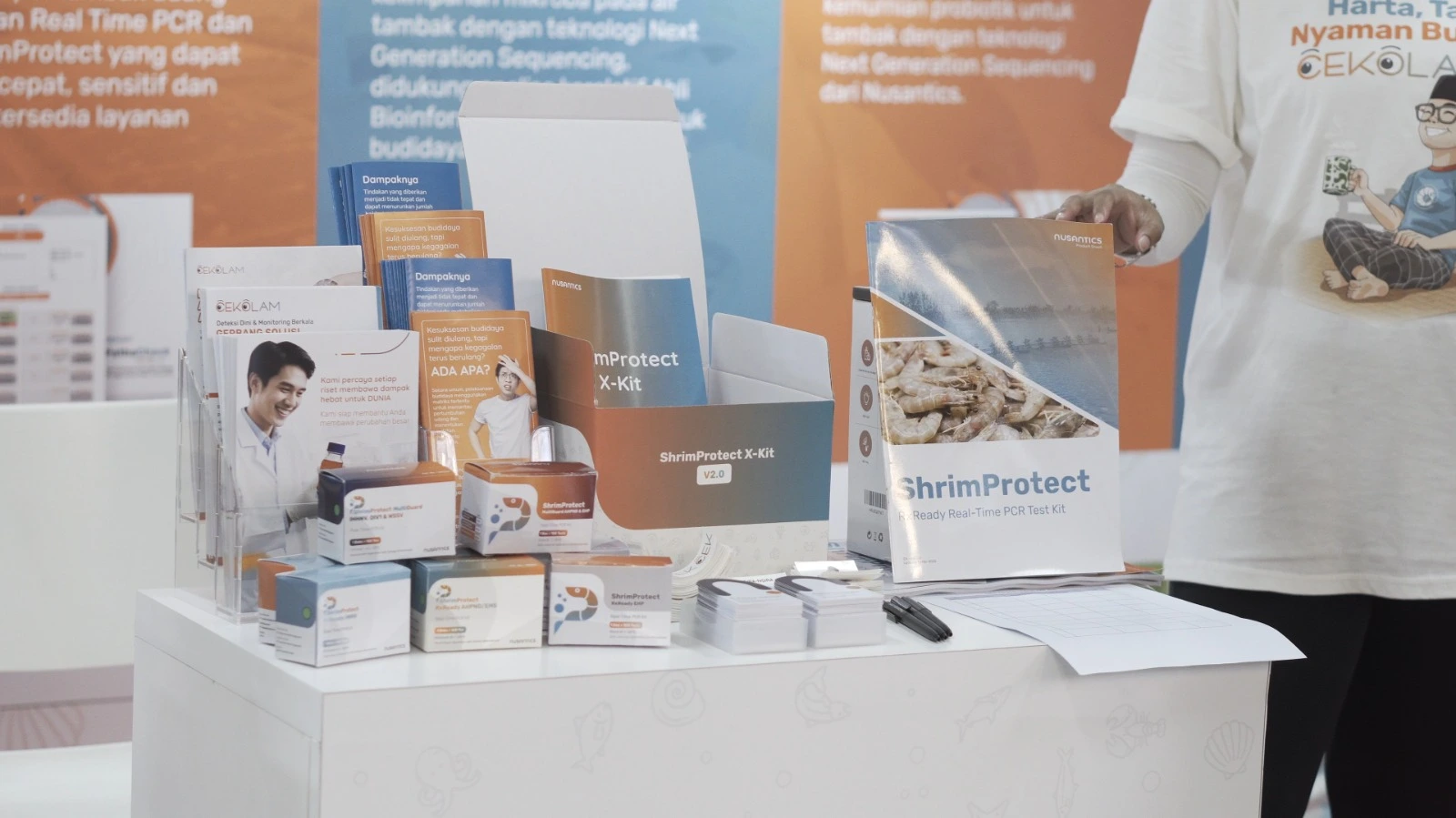

Shrimp
How Early Detection Helps Shrimp Farmers Avoid Losses
Highlight

ShrimProtect AHPND/EMS
Highlight

ShrimProtect AHPND/EMS

February 12, 2024
Nusantics Luncurkan PathoScan hrHPV qPCR Kit untuk Skrining/Pemeriksaan HPV dengan Menggunakan Urine dan Swab Serviks
Untuk mendukung RAN Kementerian Kesehatan Republik Indonesia, Nusantics memberikan solusi alat skrining PathoScan hrHPV qPCR Kit yang mampu mendeteksi 14 Jenis HPV risiko tinggi (hr).

July 20, 2023
CeKolam by Nusantics: A Modern Solution to Boost Shrimp Production in Indonesia
CeKolam, an innovation from Nusantics, provides early disease detection solutions to help Indonesian shrimp farmers maintain quality and boost production.
Knowledge Hub
Menu
Find Us
Mon - Fri: 9 a.m. - 6 p.m.
i3L Campus @ Lvl. 3
Jl. Pulomas Barat No.Kav.88, RT.4/RW.9, Kayu Putih, Pulo Gadung,
Jakarta Timur 13210
Contact Us
hello@nusantics.com
+62 (21) 509 194 30
Copyright © 2025 PT Riset Nusantara Genetika, PT Nusantara Butuh Diagnostik. All Rights Reserved.Privacy Policy
© 2025 PT Riset Nusantara Genetika.
Privacy Policy

























